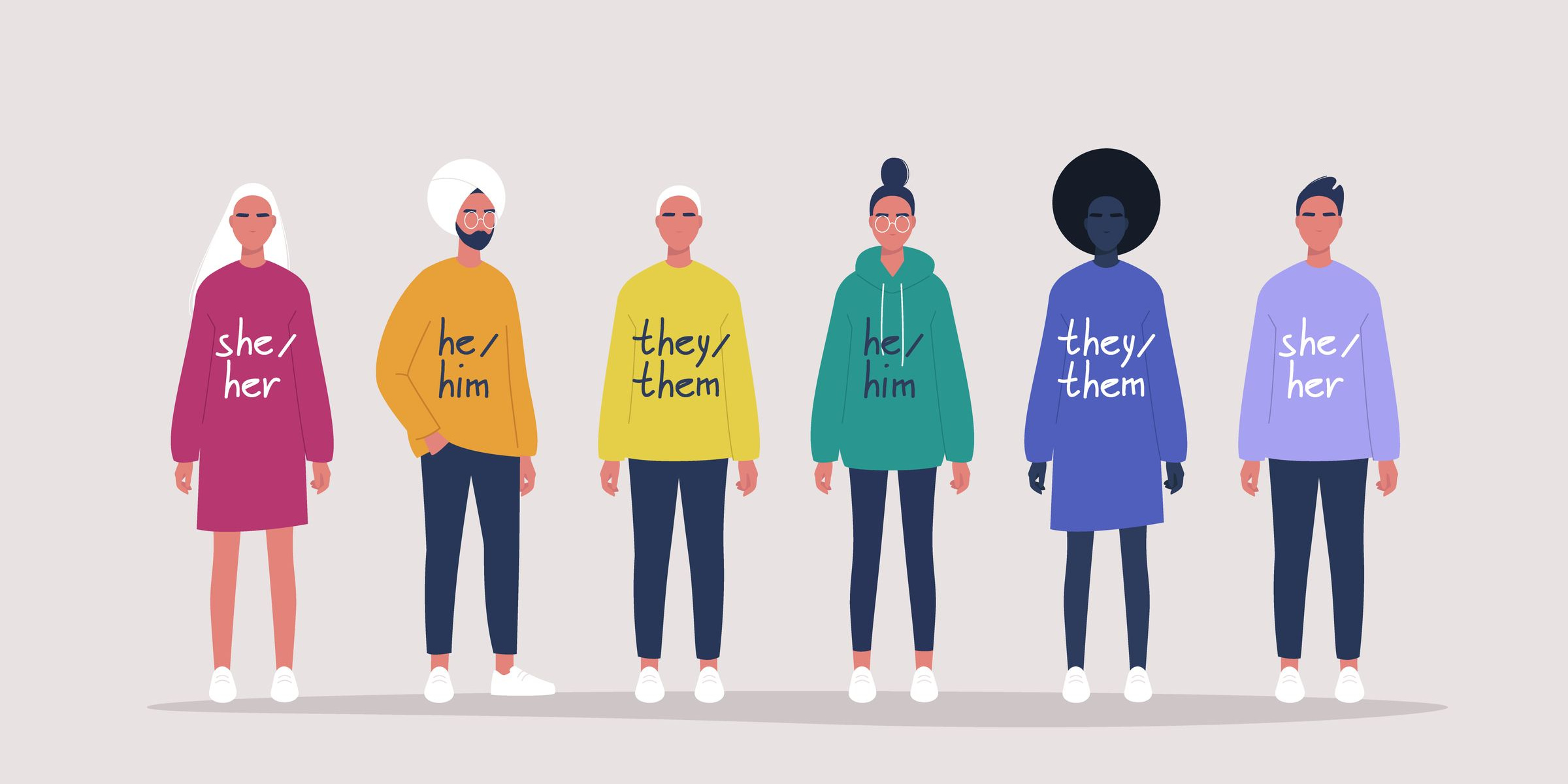Language is so engrained within us as humans that it’s not always obvious how grammar can affect our ability to create a gender inclusive environment. For example, many people around the world grow up speaking gendered languages. This means that the grammatical rules of the language might require you to indicate the gender of an individual when speaking in the third person, even if gender is irrelevant.
In English, for example, you might say, “She went to the store” if your female friend went to the store. In some languages, even inanimate objects take on a gender, even though in reality they have no biological gender. In Spanish, for example, la tienda (the store) takes on a feminine form. And in German, der Löffel (the spoon) has a masculine form. I’ve always wondered why and how such words were chosen to be feminine or masculine. Surely a review of the curriculum in any gender studies department would reveal the history, but that is a separate topic.
Regardless of how these words ended up as “masculine” or “feminine,” linguists and sociocultural anthropologists have shown how the languages we speak actually shape the way we see the world. For instance, gendered languages that have distinct male and female pronouns reinforce the notion of a binary gender system, leaving little room for people whose gender identity is non-binary. Ultimately, this gets in the way of creating a gender-inclusive environment.
The APA Sets a New Language Precedent for Inclusive Behavior
Many of us who were formally taught English in the classroom know that there are two gendered sets of pronouns for singular, third person use:
- · He/him/his
- · She/ her/ hers
Historically, these two sets of gendered pronouns have been the only ones we can use to refer to someone in the third person while remaining in the good graces of the Oxford English Dictionary.
However, the American Psychological Association (APA) has recently made a bold move to in endorse the use of “they” as an inclusive gender-neutral pronoun that can—and should—be used in both the singular and plural. Specifically, APA Style now says that it’s acceptable to use they/them/their instead of he/him/his or she/her/hers in two scenarios:
- When you are referring to a generic person whose gender is irrelevant to the context of what you’re saying, or
- When you know the individual’s preferred pronouns are in fact nonbinary, and “they” is the only way you should refer to that person.
APA style also says that one should continue to use the gendered pronouns when it is relevant to the context of the sentence.
The APA’s decision to incorporate a gender-neutral pronoun is significant because it sets a new precedent for inclusive behavior. How? APA style represents a “gold standard” for the English language worldwide, especially for scholarly, professional writers. Here’s more from their website: “With millions of copies sold worldwide in multiple languages, [the APA’s Publication Manual] is the style manual of choice for writers, researchers, editors, students, and educators in the social and behavioral sciences, natural sciences, nursing, communications, education, business, engineering, and other fields.”
What Does This New Pronoun Look Like in Practice?
Each student submitted their art portfolio to the committee.
instead of
Each student submitted his or her art portfolio to the committee.
----------------------------
I just saw Jessie. They went to the store.
instead of
I just saw Jessie. He went to the store.
How Do Gender Inclusive Pronouns Inspire Inclusive Behavior?
The practice of stripping a statement of a gendered pronoun can promote an inclusive environment in two key ways:
- It does not prime the listener with the gender of the person being described when gender is irrelevant to the context of the sentence.
- It provides a grammatically correct way to refer to any gender, binary or non-binary.
For example, this gender inclusive style eliminates the sorts of assumptions that a person might begin to make, consciously or unconsciously, about the person in question (also known as implicit bias, a natural reaction of our brain that has been shown to cause gender inequality).
Of course, inclusive pronouns go beyond implicit bias, and the guideline to use a person’s preferred pronouns is still important. Asking others for their preferred pronouns (or volunteering your own) remains an important gesture to help create an inclusive environment for people of all gender identities and gender expressions.
The APA’s endorsement for a gender-inclusive pronoun is a signal to the world that inclusion matters. I personally don’t consider the singular use of “they” to be an erasure of gender, but a way to help create an inclusive environment for all gender identities, including marginalized, non-binary gender identities. What do you think about this new pronoun? Share your thoughts in the comments section below.
Want to create a more inclusive environment in your workplace? Request a demo and learn about our new Global Inclusion Course.


